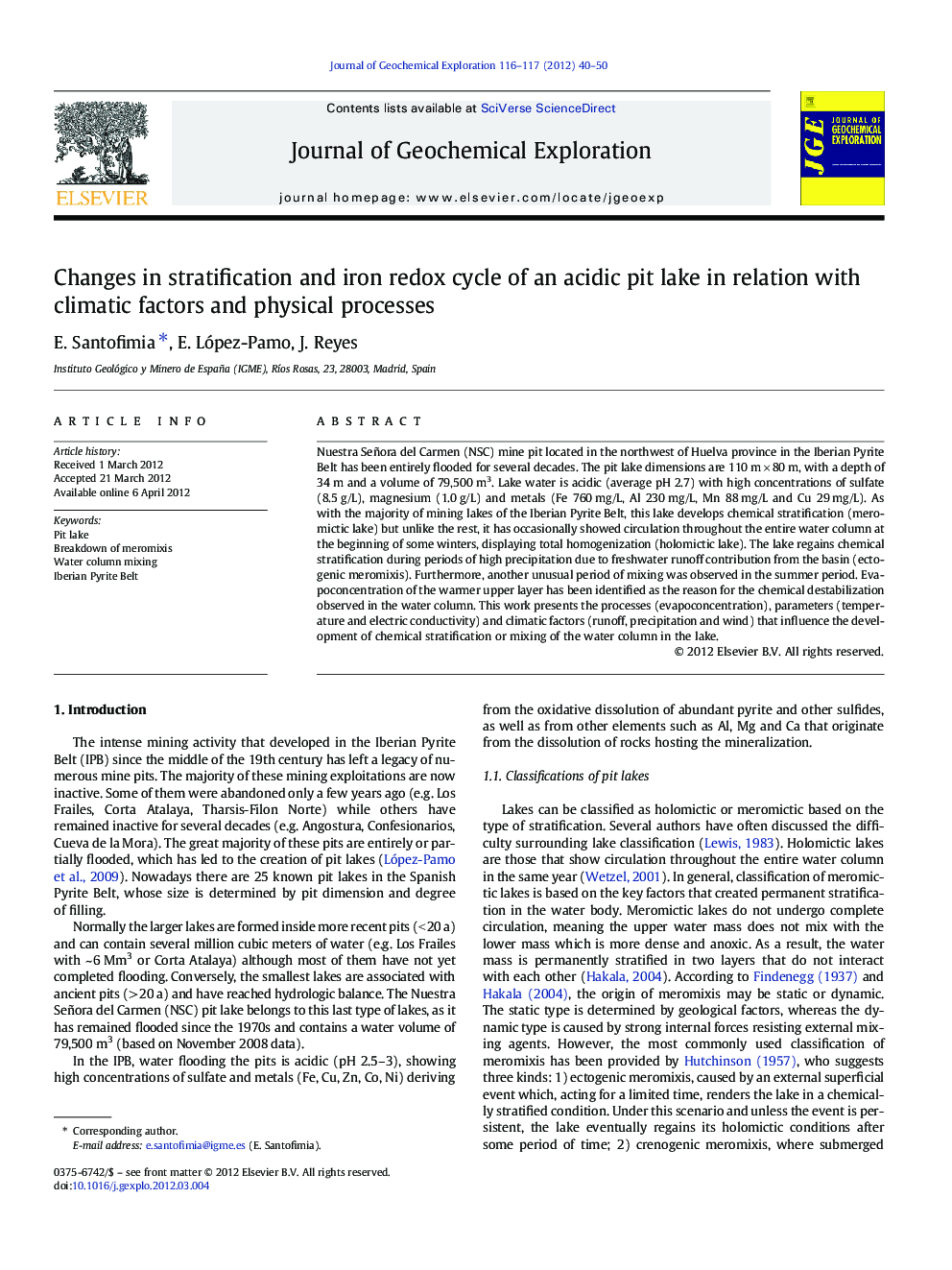| Article ID | Journal | Published Year | Pages | File Type |
|---|---|---|---|---|
| 4457721 | Journal of Geochemical Exploration | 2012 | 11 Pages |
Nuestra Señora del Carmen (NSC) mine pit located in the northwest of Huelva province in the Iberian Pyrite Belt has been entirely flooded for several decades. The pit lake dimensions are 110 m × 80 m, with a depth of 34 m and a volume of 79,500 m3. Lake water is acidic (average pH 2.7) with high concentrations of sulfate (8.5 g/L), magnesium (1.0 g/L) and metals (Fe 760 mg/L, Al 230 mg/L, Mn 88 mg/L and Cu 29 mg/L). As with the majority of mining lakes of the Iberian Pyrite Belt, this lake develops chemical stratification (meromictic lake) but unlike the rest, it has occasionally showed circulation throughout the entire water column at the beginning of some winters, displaying total homogenization (holomictic lake). The lake regains chemical stratification during periods of high precipitation due to freshwater runoff contribution from the basin (ectogenic meromixis). Furthermore, another unusual period of mixing was observed in the summer period. Evapoconcentration of the warmer upper layer has been identified as the reason for the chemical destabilization observed in the water column. This work presents the processes (evapoconcentration), parameters (temperature and electric conductivity) and climatic factors (runoff, precipitation and wind) that influence the development of chemical stratification or mixing of the water column in the lake.
► We evaluate factors that cause the development of stratification or mixing of a lake. ► Dry autumn helps the winter mixing (holomixis). ► Evapoconcentration can cause an unusual summer mixing. ► The stratification increases the Fe(II)/Fe(III) ratio, by the reduction of Fe(III). ► The mixing decreases the Fe(II)/Fe(III) ratio, by the oxidation Fe(II).
